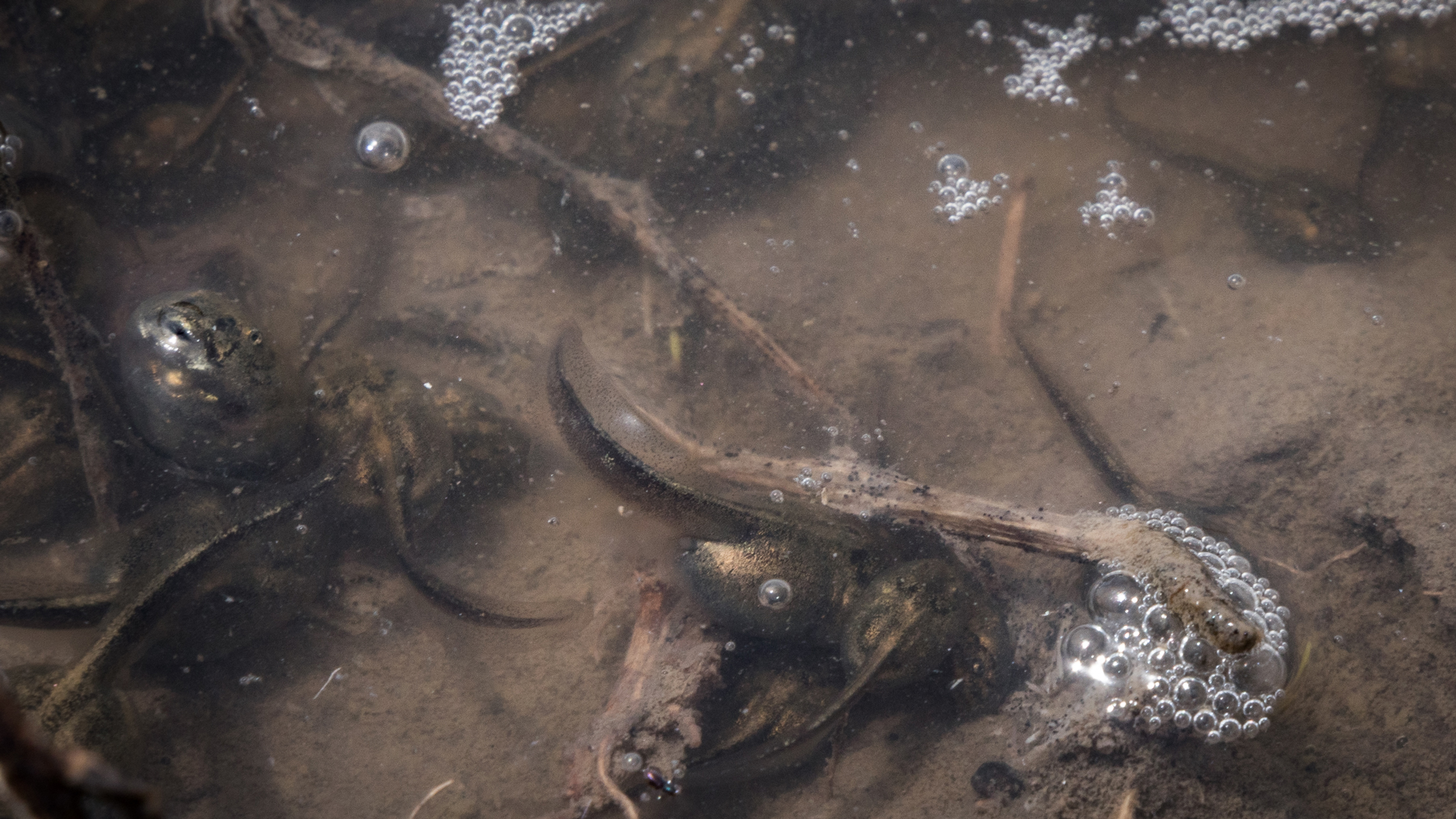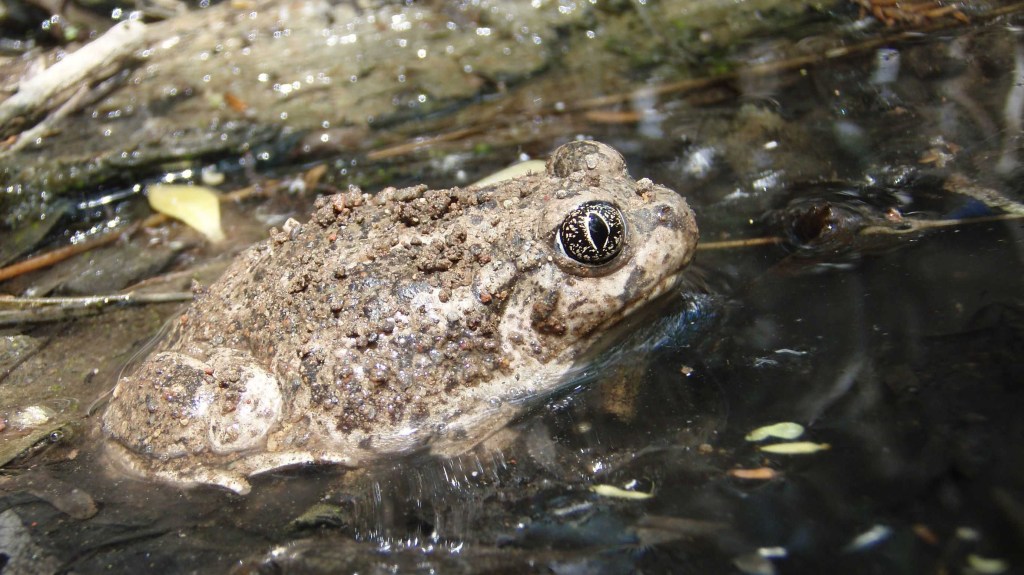There’s a puddle in the desert larger than an umbrella and less than ankle deep. Easily passed over by toes, but not by Great Basin spadefoot toads. It’s a tadpole nursery. Their nickel-sized bodies with tails squirm in a tight bunch all cozy like.
Then the largest in the pod opens its jaws and eats the new life next to it. Cannibalistic tadpoles? Creepy and crazy. Admittedly it’s not as crazy as young tiger salamanders that eat other young salamanders but can smell who they’re related to so they don’t eat siblings. But still crazy.
“Cannibalistic tadpoles could be an adaptation for getting out of the ponds quicker,” says Chuck Peterson, Idaho State University Department of Biological Sciences professor. “They develop special mouth parts that look like little jaws because they’re in this race against time. They feed as quickly as they can.”
Peterson is watching Great Basin spadefoot tadpoles feed. It’s been at least five years since he’s seen them. He finds them at the end of the appropriately named Big Lost River.
The Big Lost dumps into a reservoir in central Idaho. The reservoir’s water is released in controlled measures for miles of irrigation. Some years it goes 26 miles to the next town, Arco, before it dries up. In high water years, like this year, the Big Lost makes it all the way to big desert habitat, covered with lava fields and sinks. There it disappears into the ground, only to reappear up to 200 years later when it bursts out of the Snake River Canyon. In modern times, the Big Lost doesn’t reach the sinks most years, but when it does, the toads find it.
“Spadefoot toads are especially interesting,” Peterson says. “They’re one of the most successful amphibians living in areas with not much water like deserts.”

These amphibians have shovel-shaped back feet with a sharp-spade like structure. That’s how they burrow backward into the soil when the water dries up on the surface. Once they’re deep in the dirt, five to ten feet deep, they stay there until Mother Nature produces another puddle. That could be five to ten years. That’s right: a spadefoot toad might hunker down for a decade. It will be just fine as long as the toads are deep.
“They’re not rare, but they’re difficult to find,” he says. “You can go literally years without seeing them in a location because they spend most of their time underground.”
Peterson studies garter snakes. Snakes eat spadefoot toads. Peterson is in the sinks to see how many tadpoles will turn into toads. He sees hundreds. The opportunistic breeders found romance in the river water finally reaching their burrows.

“We think garter snakes come from several miles around to feed on these toads,” Peterson says. “We’ve seen a decrease in garter snakes at a nearby snake’s den and that’s probably because the toads are not around to feed on.”
Based on the size of the tadpoles, the amphibians mated two weeks ago. The tadpoles need about three weeks to turn into spadefoot toads, but the water is already receding — thus the race against time and the eating of thy neighbor.
“In 1993, the water didn’t last long enough. The toads made tadpoles, but those tadpoles didn’t have time to turn into toads,” Peterson says. “Toads live into their teens so what we hope for is at least every decade or so they get the chance to reproduce.”

There are thousands of toads in the desert. That sounds like a lot, but there isn’t a lot of water, and certainly not the amount of water that used to produce springtime lakes in the 1980s. Water reaching the sinks is a rare event in recent years, but when it gets there the toads come out and so does Peterson.
“I wonder about them during droughts,” he says. “This is not a normal situation out here anymore. If we ever go a really long time, like 20 years, I wonder if the species will disappear from this part of the state.”




The fact that some toads can live underground for years has amazed me. On our ranch in wyoming rains sufficient to fill ponds could be years apart, but when they filled, I could hear them croaking nearly 5/8 miles away. Living in a cold and windy winter enviroment for months at a time, hibernation seems plausible.
Yup, we too are wondering about the toads that burrow under stock tanks on the increasingly arid mesas west of Taos where we dwell. It has been at least 4 years since we’ve heard the nocturnal roar of their furious mating song. Sure hope that sound does not disappear from this landscape forever…
Absolutely fascinating!!!!!